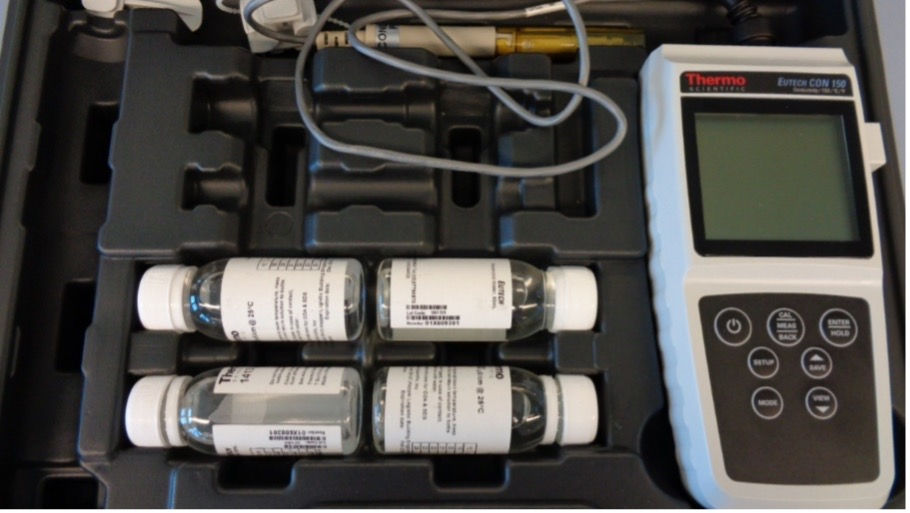- EJPPS

- Jan 4, 2023
- 3 min read
Updated: Jan 13, 2023
Editorial | Open Access | Published 4th January 2023
GUEST EDITORIAL : Pest Control
Author : Malcolm Holmes CChem MRSC
Perhaps the most famous pest event occurred in 1947 when a moth got stuck in the Harvard Mark II computer. Engineers servicing the machine taped the dead moth into a logbook and annotated it as “first actual case of bug being found.”
There have been several famous cases since then including in April 2016 when the world's most powerful particle accelerator came to an abrupt halt due to a power outage. The cause was apparently a weasel or marten which had chewed its way into one of the collider’s electrical transformers, triggering a short circuit. A second outage was caused the following November, this time apparently by a stone marten.
Personally, I and several colleagues have had a number of ‘interesting’ pest / pest control experiences when auditing factories, warehouses and distribution centres. One colleague told me of seeing lots of small round holes in a warehouse roof on a Far Eastern pharma factory. The explanation was it was part of pest control. Birds regularly got into the warehouse and the chosen solution was to shoot them. This often led to stray pellets piercing the roof. A routine maintenance schedule was in place to plug the holes (how much more humane, safe and less costly would it have been to install preventative measures?).
Another colleague told me that on a visit to an African facility he actually saw a lizard on the wall in the grade B area of a steriles facility. – He didn’t see any flies in there though so presumably the lizard was doing a good job!!!
On a familiarisation tour of a Middle East facility I remarked on the lack of evidence of any rodent traps in the warehouse and was confidently informed that they were not needed as rodents were not a problem. A little later I met the pest control officer – a large black and white cat – snoozing on some freshly delivered sacks of sugar in the loading bay of the warehouse (well if it’s good enough for 10 Downing St.----)
Perhaps my most interesting discovery though was of the python. Once again in a ’tropical go down’ warehouse (louvres at low level and gridded vents at high level to encourage natural cooling) I again noted the lack of rodent traps. This time the explanation was “we don’t need them, the python takes care of all that for us” I insisted they made the louvres python proof and instigated a proper pest control regime, preferably using a professional service. I said I would call back on the last leg of my three-week trip and expected to see significant progress. On my return the factory engineer was told to “take Mr Holmes to see what the python thought of his plan”. Strong wire mesh had been fitted to the louvres but had been smashed in by the python, eager to get at his dinner. A week or so later the very large snake was caught and placed in a nearby snake farm.
Remember, pest control programmes need to deal with all potential pests – termites – ants near anything sugary, flying insects, creepy-crawleys, bats, birds etc. depending on local knowledge and opportunities. So often in the past I have found that even professional pest services only focus on rodents. In some instances I have thought that the most likely attractant for rodents in a facility was the presence of baited traps. The Japanese like to use moth/insect traps in peripheral areas to assess the potential.
One general manager I met in Scandinavia refused outright to install a pest control programme in his brand new purpose designed facility. It was an excellent design and built to keep out rodents, birds insects etc. I had some sympathy with him but explained that it was a mandatory requirement, but he held his ground and insisted that he would not set up a pest control programme unless he had evidence of a problem.
Don’t forget about good detective work.
A UK facility was informed by its customer in Japan that a recall had been performed of a batch of UK manufactured injectable product because of a mosquito discovered in a syringe of prepared injection. The UK manufacturer said it was impossible to have entered the product in their facility and must have been as a result of preparation in the clinic. Eventually the insect was sent to the UK National History Museum where it was identified as a variety of mosquito found predominantly in Northern Japan. Subsequently it was found that the needles used in the clinic were sourced from a facility in that area and after a second incident the needle facility was inspected and found to have a mosquito ‘issue’




Comments